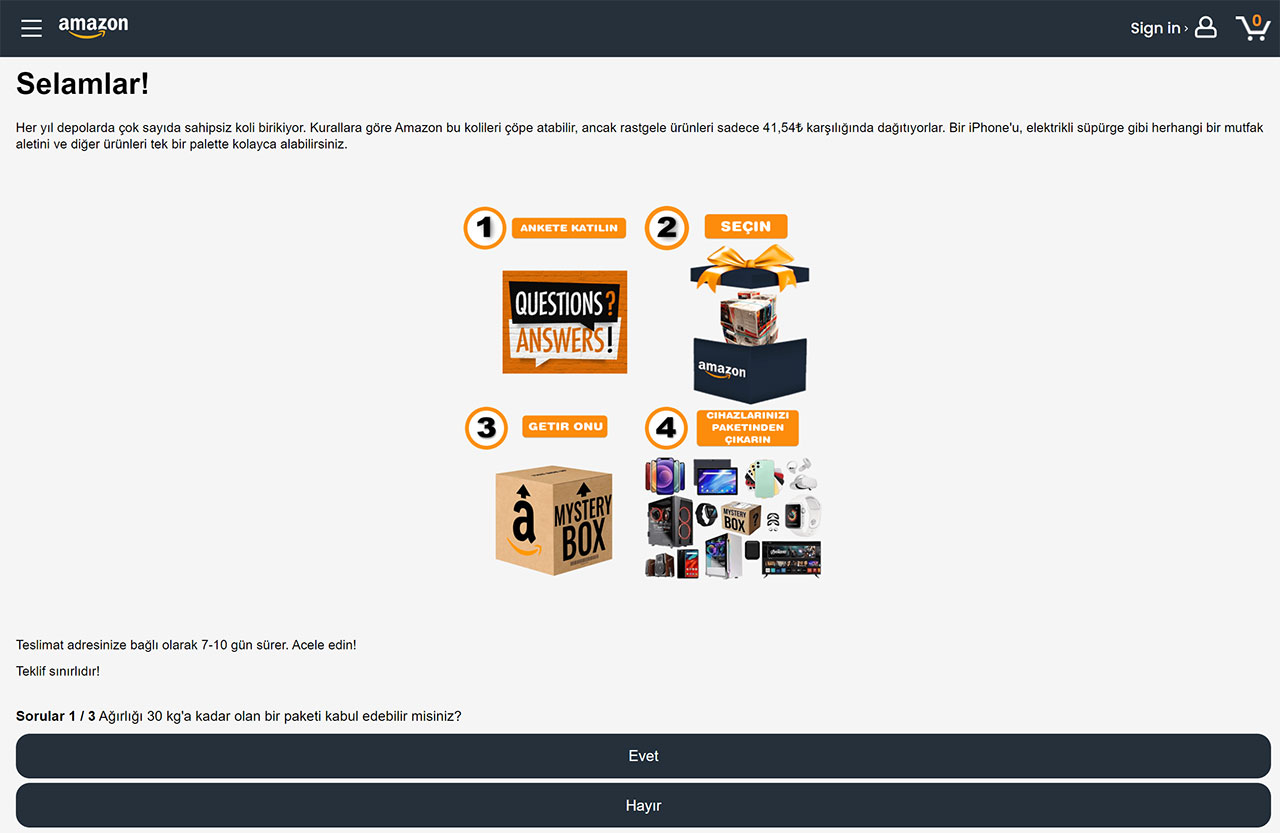The fraudulent Amazon packages allegedly distributed for free and undelivered from a profile called “Forgotten Packages” on Facebook began.
Fraud incidents in the internet world continue at full speed and probably never will. it won’t end. It is our duty as internet users not to be fooled by these scammers and to have basic information about the internet.
As a publisher, we share with you the fraud methods we see on the internet as much as we can as part of our duty. Today, we are here with another one of them. Of course, the method we will describe shortly is not a new method, but spread rapidly in a short time It’s good to be warned.
“Undelivered Amazon packages” scam:
In this fraud method, which exploded especially on Facebook, where the internet awareness is at the lowest level, people use Amazon’s “undeliverable packagesHe claims he gave it as a gift. In these packages, such as iPhone, PlayStation and television or microwave There may be products worth thousands of TL. is shared.
The post, made from the profile called “Forgotten Packages”, garnered hundreds of likes and comments. However, especially when we look at the comment section with many fake comments we meet. The same fake comments can also be seen on the website in the link provided in the post.

Moreover, on this page, unlike the comments on Facebook, there are Turkish comments made by foreign names, not Turkish names.
So how is fraud done with free packages?

Of course, for fraud to be ‘fraud’, these people also need to collect money. The scammers are also looking for these free packages.1.95 euros“He asks for a fee. It is stated that the products sent will be ‘random’.
How do you avoid being baited by such traps?
- Check out the activity of the people/pages making the posts, the number of likes/followers.
- See the layout of the comments. Using commas and periods in social media; There are very few people who write words properly, remember this fact.
- You can right-click on the images shared by the pages or shared in the comments.Search the image with GoogleSearch the internet by clicking ”. You will surely see that the same image is shared on many different platforms.
- Check for yourself the ‘rules’ that scammers claim to exist. Not from the Internet, but from the terms and conditions texts of the platforms.
- Check the URL of the website you are directed to. The URL will be close to or completely independent of the original name of the platform. But it cannot be the same.
- Use your general logic: why would Amazon or any other platform distribute packages for free?
